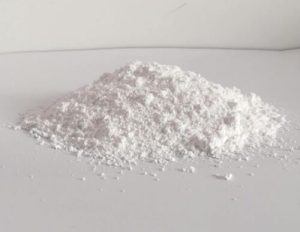Surface modification is an important processing technology necessary to improve the application performance of calcium carbonate, improve applicability, expand the market and dosage. At present, there are mainly inorganic surface treatment, organic surface modification, polymer surface modification, mechanochemical modification and Five categories of methods including high-energy surface modification.

1. Calcium carbonate inorganic surface treatment
Calcium carbonate has the disadvantages of poor acid resistance and high pH value, which limits its scope of application and usage to a great extent. The inorganic surface modification of calcium carbonate can make the surface of calcium carbonate produce double electrostatic layers, thereby reducing the mutual repulsion between particles and reducing the generation of accumulation phenomenon. At the same time, the hydrophilicity of calcium carbonate is increased, so that calcium carbonate can be well wetted in water, thereby increasing the dispersion performance and expanding the scope of application.
2. Surface modification of calcium carbonate organic matter
Organic modification mainly refers to wrapping organic modifiers on the surface of calcium carbonate by chemical or physical methods to change the surface properties of calcium carbonate, thereby increasing interfacial compatibility and reducing powder agglomeration. It is the most mainstream of calcium carbonate surface modification method.
Commonly used surface modifiers mainly include: fatty acids (salts), phosphate esters, quaternary ammonium salts, silane coupling agents, titanate coupling agents, aluminate coupling agents, and composite coupling agents.
3. Surface modification of calcium carbonate polymer
Polymer surface modification refers to the formation of a polymer layer with a core-shell structure on the surface of calcium carbonate particles. There are two main cases of polymer modified calcium carbonate: one is to form a polymer segment through polymerization reaction on the surface of calcium carbonate; the other is to dissolve the polymer in an appropriate solvent to form a polymer solution, and to Calcium carbonate is added, and when the polymer is gradually adsorbed to the surface of the calcium carbonate, the solvent is removed to form a coating. In this way, the polymer can be directional adsorbed to the surface of calcium carbonate, forming an effective adsorption layer, reducing the agglomeration of calcium carbonate particles, improving the dispersion, improving the shortcomings of poor dispersion performance of calcium carbonate during use, and achieving the purpose of surface modification .
4. Mechanochemical modification of calcium carbonate
Mechanochemical modification mainly uses strong mechanical force to activate the surface of calcium carbonate particles, and the crystal structure of the surface of calcium carbonate changes, making the crystal lattice move to a certain extent, so that the reactivity with other substances be enhanced.
This method is mainly effective for calcium carbonate with relatively large particles, but for nano-calcium carbonate, due to its small particle size, the effect of mechanical force on it is not very good, but it can activate some active sites on the surface And groups can enhance the interaction with organic surface modifiers, so the method of combining mechanochemistry and other modification methods can be used to modify nano-calcium carbonate.
5. Calcium carbonate high energy surface modification
High-energy surface modification mainly uses high-energy rays, plasma, etc. to modify the surface of inorganic powders. This method mainly relies on high-energy rays and plasma sources to bombard and touch the surface of calcium carbonate, so that some reactive sites are generated on the surface of calcium carbonate, and then unsaturated monomers (such as vinyl Monomer), the unsaturated monomer can react with the active sites on the surface to form a coated organic film on the surface of inorganic particles.
However, the cost of this method is high, and the effect after modification is not very stable, so the application is limited to a certain extent.
